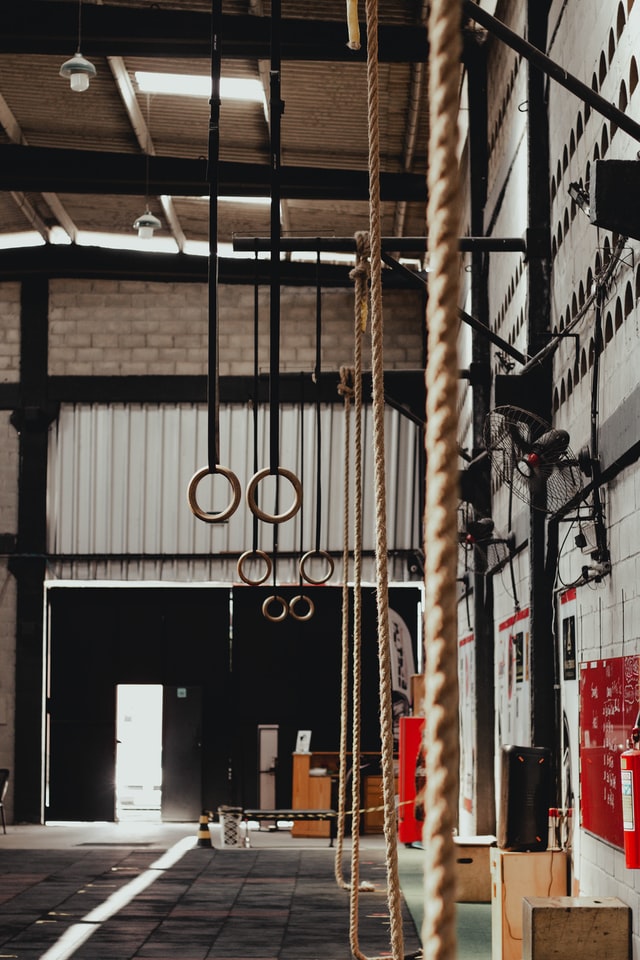Exercise Less To Get Better Results
Exercise less to get better results. When performing exercise recovery and nutrition are crucial for muscle growth. Especially for anyone doing resistance training since the individual is breaking down muscle. Also, resistance training fatigues the central nervous system. Now, there are many people who exercise frequently throughout most of the week. Everything is based upon the person’s goals whether it’d be building muscle, being fit, having better endurance, or any other goal. For most, having a goal may be a problem since they are obsessed with it or they may not make their goal (which can lead to stress and feeling down).
What is most important is making the regime doable with or without a gym. Again it varies based on the individual’s goal. When it comes to building big muscle many would think going to the gym is essential. It is quite true since one can increase the weight in each exercise which makes it challenging. Progressive overload is an important factor in building muscle. Training frequency also matters on how many times the person is training each muscle group. It is recommended that the individual trains the same muscle groups 2x to 3x per week for muscle growth. Not many people have the time to exercise more than one hour (or even an hour) a day, nor can they exercise 5x to 6x a week.
Low Volume Training is Efficient
Low volume training is suitable for many different people. Especially for those who are involved in many activities in their life. It could be operating a business, family, work, or something else. Generally, exercising should be about being fit, healthy, and strong. With low volume exercise, it is imperative the practitioner trains with great intensity to get the most out of it. As mentioned, progressive overload is a great way to increase intensity. Keep in mind the body is experiencing stress as the individual exercises. Remember in order to get results one must rest and eat clean. Low volume training allows the person to recover faster in comparison to high volume training.
It can take up to 48 to 72 hours for the muscle to recover from a workout session. When one overtrains it can fatigue the central nervous system. If there is not enough recovery then this can affect the individual’s performance when exercising.
What to Consider
When performing exercise it is best to focus on the quality of the set. This is important because the intensity matters as the person stimulate their muscles. Growth occurs when the muscle is challenged (again, resting also matters) so if doing resistance training increase the weight by a few pounds (about 5 pounds increase) week after week. If performing calisthenics look to do an advanced variation to make it harder. The more challenging it becomes the greater the stimulus.
It is always about quality over quantity. When doing too many sets and reps it can sacrifice the quality of the set. In many cases, people get too fatigued to meet their rep range goal. More importantly, the person’s form can get compromised. When exercises are being done improperly there can be a chance of injury and they are not going to get much stimulus from the exercise.
What Could Be Viable?
Low-volume training is viable for everyone. Usually, those who train often would like to gain size, however, this is not the case for the majority of people. Some people would like to have strength and a little bit of density. It is best to train 10 to 20 sets a week for each muscle group. This can be achievable by doing an upper/lower body split or full body. The person can create a regime for 3 to 4 days a week of training. This could be something viable since one can recover in-between days. There would not be any reason to exercise 5 to 6 days a week (unless you are a bodybuilder or you do this for a living).
Links in this post may contain affiliates.
Equipment to consider


Time is Important
There is a lot of time wasted when training every day. Without recovery, there can be a decline in strength and growth. Training less leads to more gains if done properly. Picture this when someone goes to the gym there are certain tasks they have to do.
- They have to get ready and travel to the gym.
- Prepare the tools needed (Bench, barbell, dumbbells, etc.)
- Rerack weights or adjust weights.
- May have to wait for someone to finish their sets on a machine, bench, or other.
- Conversations can occur (not a bad thing but still wastes time)
It really matters how one manages their time at the gym. There is nothing wrong with going to the gym, but the points above are something that are going to be experienced. Sometimes you may spend more than one hour at the gym!
Some people perform a hybrid calisthenics routine to save time since it is not going to be all weight training. Plus in order to do advanced bodyweight exercises, it demands the individual to be lean and strong.
Stress Affects Muscle Gain?
There is a hormone called cortisol and if cortisol goes up it can affect muscle gain. It is true when doing resistance training cortisol does go up since the body is going through stress. That is expected to happen, but outside of training it is best to reduce stress or at least manage it. Too much cortisol in the body can make a person gain fat rather muscle. Too much cortisol can also affect protein synthesis.
Check out this post on stress and how to reduce it!
What About Stimulus?
There are a plethora of ways to stimulate the muscles. Using different techniques can be helpful but it is best to find what the person is most comfortable doing (or what works best). There are several ways to make exercising challenging. It is not only subjected to only increasing the weight or doing advanced movements. Here are some other methods:
- Reverse Pyramid training
- Rest pause training
- Eccentric movement (Doing Negatives)
- Cluster Sets
- Super Sets
All these variations can make the exercises effective by implementing them in the individual’s regime. Now, not all of them have to be incorporated into one’s routine. It is whatever is suitable for their routine.
Reverse Pyramid Training
It is similar to standard pyramid training. People start with a lightweight and do high reps. They gradually increase the weight and decrease reps after every set. But with reverse pyramid training it is the opposite (hence the name!) the practitioner starts with the heaviest weight they can do and execute it with a smaller rep range.
After every set reduce the weight by 10 to 15%
Example For Reverse Pyramid training:
Bench Press: set 1: 200lbs 5 to 6 reps, 180lbs Set 2: 8 to 10 reps, 162lbs Set 3: 10 to 12 reps.
The person starts out energized and not tired when doing their heavy set.
Rest-Pause Training
This style of training consists of multiple sets and short rest periods. It begins with an activation set which can be somewhere around doing 12 to 20 reps. After doing this take a 10 to 15-second rest and perform 3 to 4 mini-sets. In these sets, the person will be doing 4 to 6 reps each along with 10 to 15 seconds of rest in between sets.
Keep in mind rest-pause training can be done on any exercise, but they are best for isolation exercises.
Example :
Lateral raises: 20lbs dumbbells. 12 to 20 reps activation set, Mini sets (use the same weight) set 1: 4 – 6 reps, set 2: 4 – 6 reps, set 3: 4-6 reps.
Remember 10 to 15-second rest in between each set
Eccentric Movement (Doing Negatives)
When doing negatives the individual is placing more tension on the muscle by going slow. This can be applied to weight training or calisthenics.
Example:
Doing a push-up. When in plank position the subject descends down their chest slowly to the floor (it could be a 3-second count or even more).
Cluster Sets
Cluster sets are subsets within a set with short rest periods. Similar to rest-pause training but except the person is not doing a full set in one attempt. Here is an example:
Pull-ups
3 sets of 8 reps
Breakdown
Set 1: 3 reps, 3 reps, 2 reps = 8 reps
Set 2: 3 reps, 3 reps, 2 reps = 8 reps
Set 3: 3 reps, 3 reps, 2 reps = 8 reps
After each cluster, the person can rest for 10 to 20 seconds. After completing each cluster that equals one set. It does not have to be broken up into 3 clusters it could be broken up into 2 or 4. It all depends on the individual on what they would like to do. What is great about this is that the person can focus on form and not be completely fatigued.
Super Sets
Supersets make exercising intense by doing two different exercises without any rest periods. For example:
10 Ring Push-ups then go straight to doing 10 ring face pull. After doing those two exercises rest for 1 to 2 min and do it again on the next set.
The awesome part is it reduces the time of workout sessions.

Sample Workout
This is a 3-day training guide and there is some equipment required when wanting to do this. It may appear to be a lot of volume, but it is just enough to do on a weekly basis. It concentrates on multiple muscles groups. As mentioned before, training the same muscle group 2x to 3x per week helps with building strength and muscle.
This guide can be modified to your liking it is always best to make a regime work well for you since everyone is different.
This is can be done at a gym or at home.
Equipment
- Pull-up Bar
- Gymnastics Rings
- Resistence Bands or Dumbbells
Workout A
Chin-ups 3 sets 5 – 8 reps (1-2min rest)
Ring Push up 3 sets 6 – 10 reps (1 – 2min rest)
Ring Rows 3 sets 6 – 10 reps
Bulgarian Split Squats 3 sets 8 – 12 reps (45 Seconds rest)
Handstand Push up Against the Wall 3 sets 6 – 15 reps (1 min rest)
Ring Bicep Curls 4 sets 8 reps (45 Seconds rest)
Lateral Raises rest-pause training activation set 12 to 20 reps. 3 mini-sets, 4 -6 reps.
Note: Superset Ring push-up and Ring rows.
Workout B
Sissy Squats 3 set 8 -12 reps (1 min rest)
Nordic Curls 3 sets 5 – 6 reps (1 min rest)
Elevated Calf Raises 4 sets 15 – 20 reps (30 – 45 second rest)
Decline Push up 4 sets 8 – 15 reps (45 – 60 seconds)
Tiger Bend tricep ext 3 sets 8 – 12 reps (1 min rest)
L-Sits 3 sets 10 – 30 second hold (1 min rest)
Note: Decline push-ups and Tiger Bend tricep ext can be done eccentrically (negatives). It is optional.
Workout C
Ring Dips 4 sets 6 – 12 reps (1 – 2 min rest)
Ring Face pulls 4 sets 8 – 12 reps
Pelican curls 3 sets 8 reps (45 – 60 seconds rest)
Ring Assisted Pistol Squats 3 sets 6 – 8 reps (1 min rest)
Single-Leg Bridge 3 sets 8 – 12 reps (1 min rest)
Note: Superset Ring dips and ring face pulls.
On rest days the person can stretch or do light cardio.
What About Nutrition?
Eating enough is an important part when trying to be fit. Everyone is different with food preferences but as long as the individual is eating healthy most of the time they should be fine. But it is not only about eating healthy foods it is also about reaching daily calorie and macro goals. The person needs to eat enough calories, fats, carbs, and protein.
To figure out how much to consume. Here is a macro calculator.
Conclusion
Overall, fitness and health is a journey where many are on a different path. There is no need to expect any results quickly except for getting better each session. With this in mind, a person would get results faster by exercising less and recovering properly. Applying the right amount of intensity will promote muscle growth and strength. There are many variations and training styles one can incorporate into their training. Other than this it is also important the practitioner consume enough whole foods throughout the day.
If you found this post helpful. Please consider sharing and subscribing.






